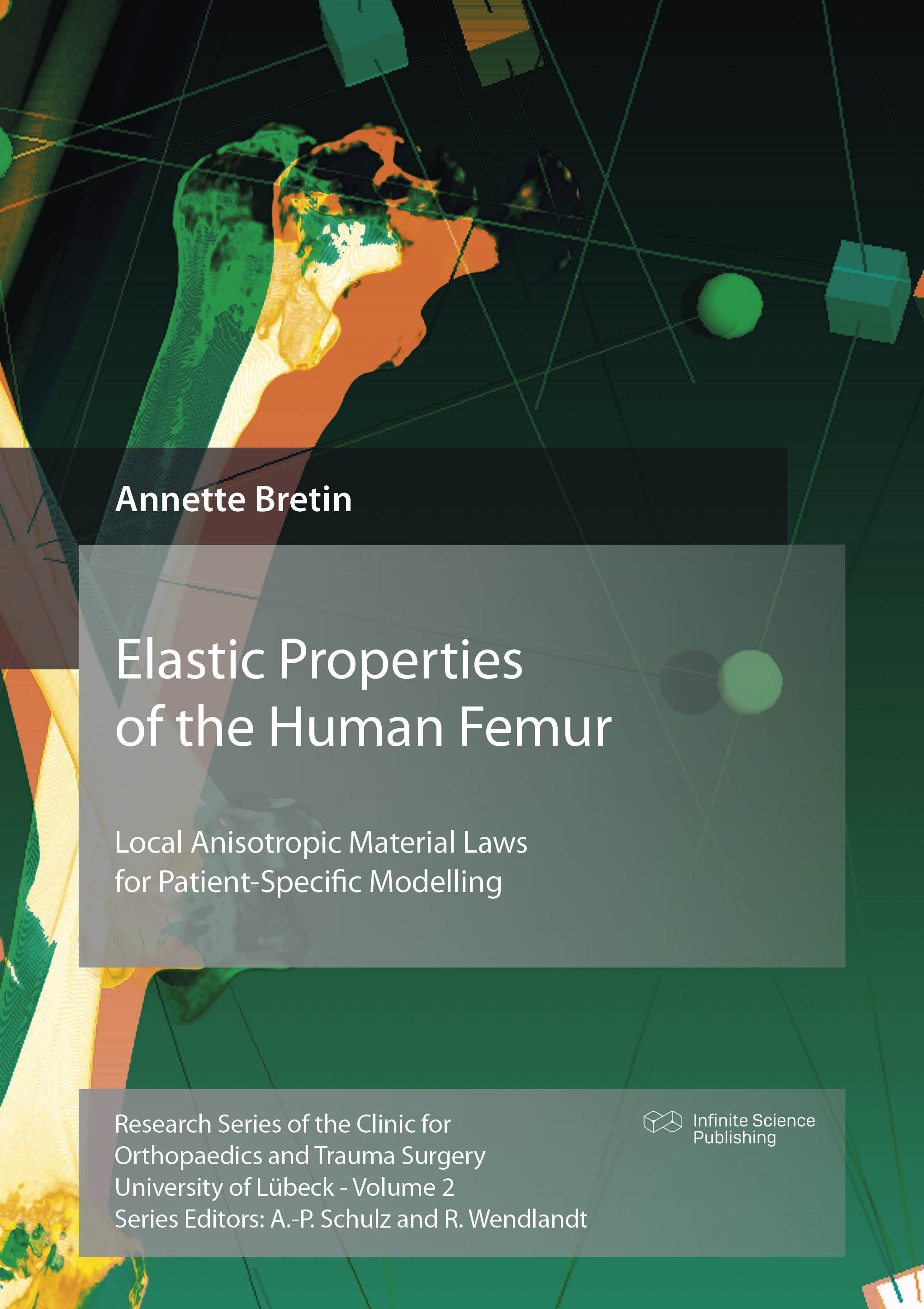Elastic Properties of the Human Femur
Local Anisotropic Material Laws for Patient-Specific Modelling
Abstract
The assignment of material properties is a challenging aspect of patient-specific modelling of bone. One approach is the material assignment based on the correlation of elastic material properties to bone mineral density. Yet, available material laws do not sufficiently reflect the anisotropy and the inhomogeneity of bone. The primary goal of this doctoral thesis was the establishment of orthotropic elasticity-density relationships in homogenized, local femoral zones, to improve the assignment of material properties in finite element models. 7 human cadaveric femora were subdivided into 14 local zones. Cortical bone samples were extracted and tested in compression and torsion tests. Videoextensometry based on digital image correlation was used to determine all 9 orthotropic constants. Cancellous samples were virtually extracted and the elastic properties were predicted by micro finite element analysis. All determined constants were correlated to the radiological bone mineral density of each sample, which was determined by quantitative computed tomography. In case of cancellous bone, each constant was additionally correlated to bone mineral density, determined from the bone volume fraction of each sample. Pooled results over all zones yielded significant correlations to bone mineral density for all Young’s and shear moduli, but the cortical Poisson’s ratios did not result in significant correlations to density. In the specific zones of cortical bone, only longitudinal Young’s moduli in the anterior, medial and posterior diaphysis and one shear modulus in the anterior diaphysis revealed significant correlations to density. The reasons were attributed to the low amount of investigated cortical samples and inaccuracies in the determination of bone mineral density. In contrast, significant correlations to bone mineral density were found for all orthotropic Young’s and shear moduli in all cancellous zones, except for one shear modulus in the tensile bundle of the femoral neck, in which the number of investigated samples was low. The statistical power of established laws was in general higher when the bone density derived from bone volume fraction was used. Orthotropic Poisson’s ratios did occasionally reveal significant correlations to density, suggesting that the material behaviour is also dependent on other factors, such as the geometry of trabecular structures.
The download file provided is an excerpt only. The complete book can be found here.


